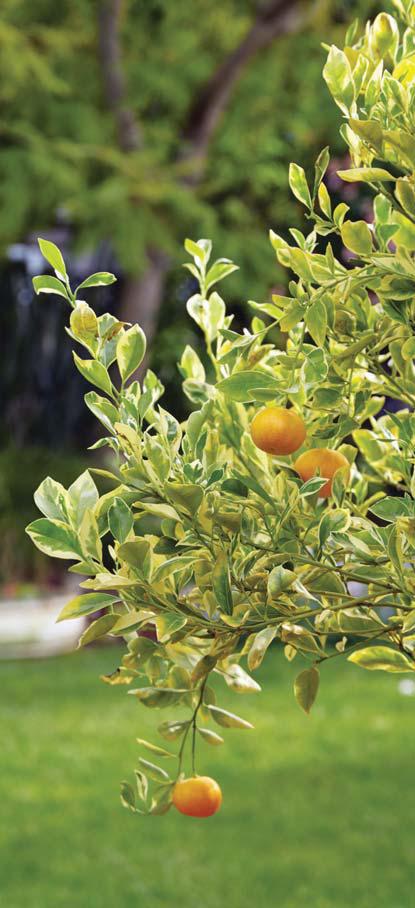Essayer OR - Gratuit
Take It Indoors
Horticulture
|September - October 2024
Cs the growing season dwindles, _ potted cittus became a summer souuenir

When I was in high school, my mom and I went plant shopping and came across several lemon trees at the garden center. Living in Wisconsin, the idea of growing citrus trees seemed far-fetched, but seeing them in the nursery inspired me to take on the unique challenge of growing lemons in a container. Of course, it took some trial and error to understand the best way to care for that lemon tree, and I'm still learning today.
WHY POTTED CITRUS?
Many of us know the satisfaction of growing our food, and producing your own citrus fruits brings that same good feeling, especially if you live in a cold climate. And it's not just lemons. You can grow oranges, limes, kumquats, tangerines, and hybrids of these fruit.
While the fruit is the main highlight, the highly fragrant blooms add another dimension to these beautiful plants. They're a great addition to patios, balconies and other outdoor areas in the summer. And during the winter, they add a touch of warmth inside our homes.
 CITRUS CHOICES
CITRUS CHOICESWhile shopping for citrus plants, you'll find certain kinds are more commonly used in containers. The Meyer lemon (Citrus meyeri) is a good example. This cross between a lemon and a mandarin bears fruit that are smaller than normal lemons and have a slight sweetness in comparison. Besides producing lots of fruit, the tree also flowers intermittently throughout the year, even in winter.
 From a grower's standpoint, Meyer lemons can seem finicky, as they tend to drop leaves after being moved indoors for the winter. But the ample fruit and flowers make up for that.
From a grower's standpoint, Meyer lemons can seem finicky, as they tend to drop leaves after being moved indoors for the winter. But the ample fruit and flowers make up for that.Cette histoire est tirée de l'édition September - October 2024 de Horticulture.
Abonnez-vous à Magzter GOLD pour accéder à des milliers d'histoires premium sélectionnées et à plus de 9 000 magazines et journaux.
Déjà abonné ? Se connecter
PLUS D'HISTOIRES DE Horticulture

Horticulture
In a Twist
A simple raised spiral creates the perfect conditions for growing a wide range of herbs
6 mins
Fall 2025

Horticulture
MANGO DREAMS
A brief horticultural history of one treasured tropical fruit
8 mins
Fall 2025

Horticulture
THE DIVERSE DESERT
The Southwest's Ecoregion 10 hosts a surprising assortment of landscapes and life
4 mins
Fall 2025

Horticulture
CULTIVATING CALM
Explore the science behind plants' power to bolster our mental and physical well-being
4 mins
Fall 2025

Horticulture
putting down Roots
All you need to know to grow cold-tolerant carrots, parsnips, beets and more
5 mins
Fall 2025

Horticulture
Berries of Blue
Add a late splash of that elusive garden color with these fruiting plants
8 mins
Fall 2025

Horticulture
Beyond Mums
10 underused perennials that bloom in autumn
8 mins
Fall 2025

Horticulture
IF PLANTS COULD TALK
I HAD A BAD DREAM the other night.
1 mins
Fall 2025

Horticulture
BULBS BY NUMBER
A guide to grouping, arranging and spacing bulbs for a natural effect
4 mins
Fall 2025

Horticulture
THEODORE KLEIN PLANT AWARDS
Standout plants for the Bluegrass state and beyond
10 mins
Fall 2025
Listen
Translate
Change font size
